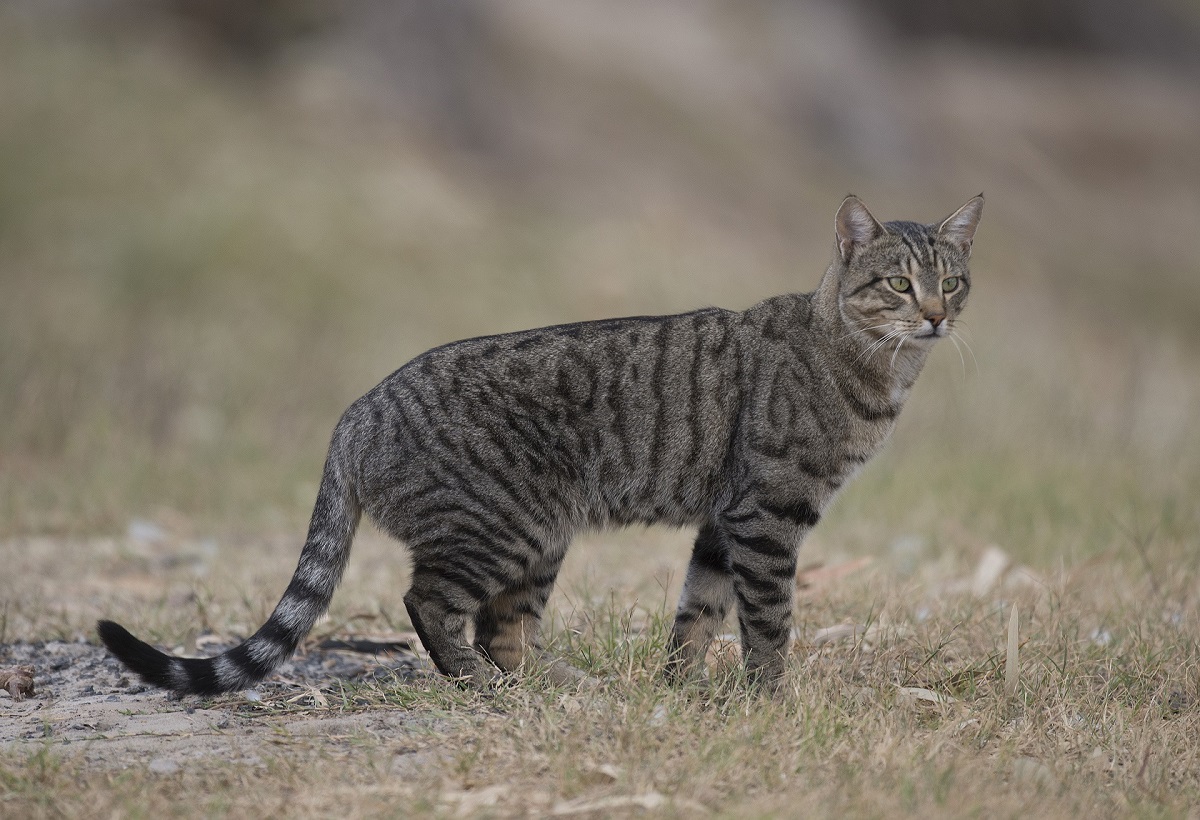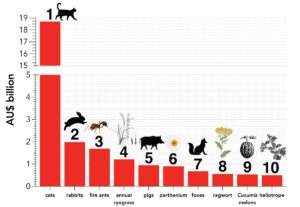
A global database set up by scientists to assemble data on the economic cost of biological invasions in support of effective government management strategies has grown to include all known invasive species.
Now involving 145 researchers from 44 countries – the current version of InvaCost has 13,553 entries in 22 languages and enables scientists to develop a clear picture about the major threats globally of invasive species to ecosystems, biodiversity, and human well-being.
Biological invasions are caused by species introduced on purpose or accidentally by humans to areas outside of their natural ranges. From cats and weeds, to crop pests and diseases, invasive species are a worldwide scourge.
Invasive species have cost over 2 trillion US dollars globally since the 1970s by damaging goods and services, and through the costs of managing them, and these economic costs are only increasing.
A new synthesis published in the journal BioScience documents the progress of the InvaCost endeavour. The study provides a timeline of the state of invasion costs, starting with prior flaws and shortcomings in the scientific literature, then how InvaCost has helped to alleviate and address these issues, and what the future potentially holds for research and policymakers.
In 2014, the InvaCost project was launched because previous cost estimates of biological invasions largely relied on outdated, flawed, and unsubstantiated sources.
InvaCost aimed to compile, describe, and standardise cost data available from many different sources. The initial focus was on invasive insects, because insects rank among the most damaging species when they become invasive.
Researchers have so far used the InvaCost database to produce more than 50 scientific publications, providing cost assessments at various geographical scales, for different groups of species, varied habitats, and many different economic sectors.
A contributor to the database since its infancy and lead research on the new study, Professor of Global Ecology Corey Bradshaw from Flinders University says the InvaCost database will continue to expand as biological invasions worsen over the coming decades.
“With better information, the worst of the potential damages can be potentially avoided.”
“Our new study serves as a go-to reference and guides not only researchers, but also informs policymakers and stakeholders who are interested in reducing the economic impacts of invasive species. Attempts to synthesise the costs of invasive species should be done frequently to capture the latest information.’’

In 2016, Professor Bradshaw led the first major output from the InvaCost database — a global assessment of the costs of invasive insects. Then in 2021, Professor Bradshaw and collaborators combined the InvaCost database with other Australian datasets covering invasive animals, invasive plants, and disease-causing agents to model the cost of invasive species in Australia.
They revealed deliberately or accidentally introduced invasive species have cost the Australian economy almost $390 billion in the last 60 years alone.
The research also warned that the number will likely rise further unless better investments, reporting, and coordinated interventions are introduced.
The BioScience paper is titled ‘Recent advances in availability and synthesis of the economic costs of biological invasions’ and is available here.

